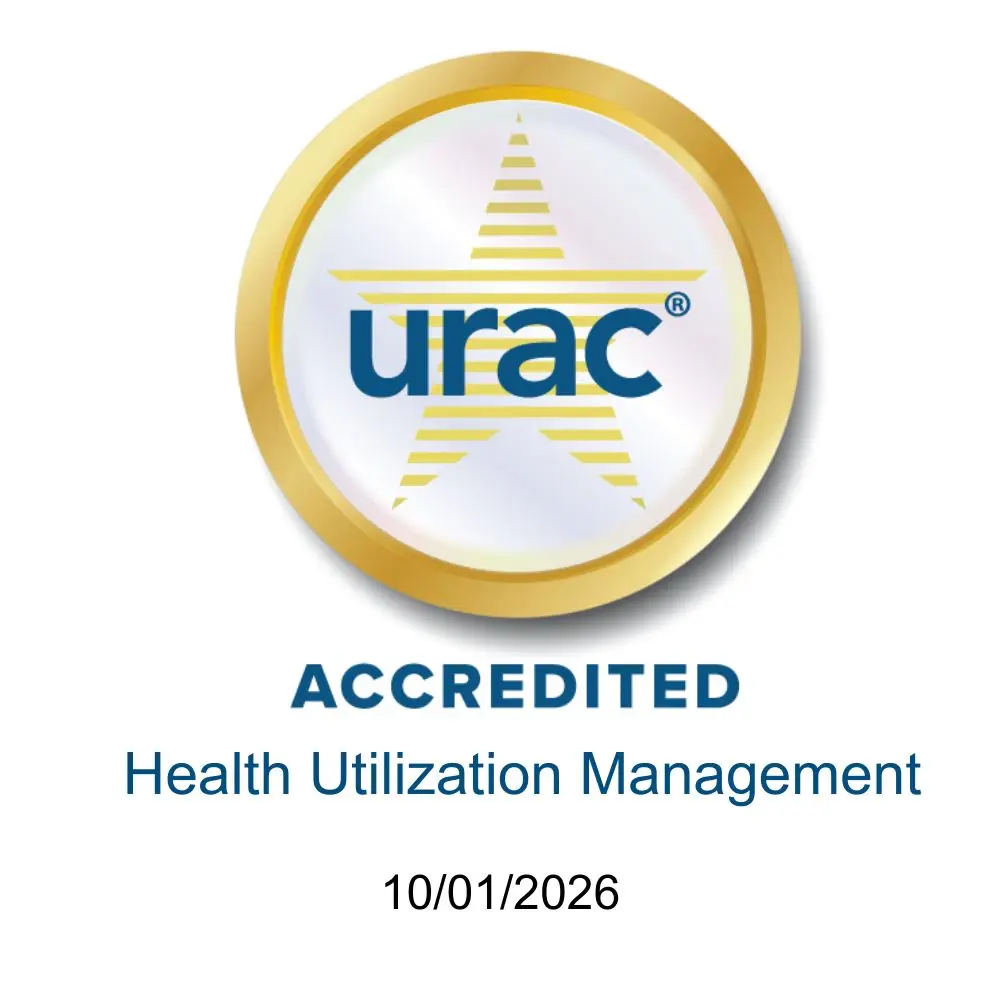WPS Powered By Auxiant brings top-tier Administrative Services Only (ASO) services to the employee benefits marketplace. This partnership combines WPS’ deep expertise in health insurance and unparalleled service with Auxiant’s flexible systems and approach to third-party health administration. Through progressive innovation and cutting-edge management options, we deliver a dynamic new offering with solutions tailored to fit any employer’s needs—with superior customer service that is second to none.
When one size doesn’t fit all, you need unique solutions. Our self-funded health plan offers a wide variety of coverage and administrative options for groups of 50 or more enrolled employees. You will benefit from increased flexibility and the best network options paired with the service to help your members find the highest-quality care at the lowest cost. Choose from multiple network options for regional, statewide, and national coverage. You’ll also have access to a best-in-class portfolio of vendors, including PBM, stop loss, and care and cost management.
Because every client is different, WPS, powered by Auxiant, offers a broad suite of administrative and care services with flexibility to address their unique needs. With WPS, employers can design their own health plan with confidence, knowing they’re protected from the unexpected.
Customer service is the heart of who we are at WPS. We pride ourselves on being live, local, and friendly. We serve customers with a personalized approach: listening to their needs, resolving their issues, and guiding them through the challenges of health coverage and health care.
Self-funded groups have complex needs, and WPS is here to support them with high-quality group service. Group leaders get the efficient, friendly claims management services of WPS and have access to a billing specialist, a dedicated account manager, and enrollment help.
WPS’ Medical Management helps improve the health of customers, reduce health care costs, and prevent customers from rising up the risk spectrum. We educate and help customers self-manage their symptoms to achieve these goals. Medical Management includes a comprehensive suite of programs to address diverse health needs across employer group populations.
WPS employs a comprehensive set of tools and processes to help ensure a group is only paying for the services for which it is responsible. And we help verify the group is paying the right amounts for those services. WPS performs a variety of checks, audits, reviews, and investigations to help ensure the group’s health care dollars are spent wisely for the highest value.

The Quality Improvement Program drives organizational improvement for excellence through efficiencies, increasing the competitive advantage, and building trust and recognition in the community to improve the health status, safety, and satisfaction of our customers.
WPS offers employers a broad variety of network options, so you can choose coverage matching your goals and preferences. WPS forms partnerships with health care providers that benefit our customers.

ASO stands for Administrative Services Only, which refers to a type of health plan where an employer contracts with a third-party administrator (TPA) to provide administrative services to self-funded employers. Under an ASO arrangement, the employer is responsible for paying claims rather than paying premiums to an insurance company. The TPA provides services such as claims processing, customer service, and data analysis. With an ASO plan, the employer has more control over the health plan’s cost and coverage.
To learn more, watch our explainer video: What is Administrative Services Only?
In a self-funded health plan, the employer funds the medical claims of its employees.
In a self-funded health plan, the employer sets aside money each year to pay for employees' medical claims. The employer works with a third-party administrator (TPA) to manage the plan and ensure that all claims are paid appropriately.
Eligibility for a self-funded health plan is determined by the employer. Typically, only employees and their dependents are eligible to participate in the plan.
The benefits of a self-funded health plan include the potential for lower costs, greater flexibility, and the ability to tailor the plan to the specific needs of the employer and its employees.
The main risk of a self-funded health plan is that the employer is responsible for paying all claims, even if the cost is higher than expected. The employer must have enough money set aside to cover these costs or the plan may become insolvent. Employers can purchase specific and/or aggregate stop loss insurance to limit the financial risk.
Yes, self-funded health plans are regulated by the government and must comply with laws such as the Employee Retirement Income Security Act (ERISA). The TPA (third-party administrator) assists the employer in ensuring that the plan complies with all applicable laws and regulations.
With a self-funded health plan, the company sets aside funds to pay for its employees’ medical claims instead of purchasing a traditional health insurance plan. Here are some steps you can follow to set up a self-funded health plan for your small business.
These are the basic steps for setting up a self-funded health plan. Keep in mind that self-funded health plans can be complex and involve significant risk, so you may want to seek the advice of a professional insurance broker or a benefits consultant to help you navigate the process.
Self-funded and fully insured group health insurance plans are two different models for providing group health insurance coverage to employees.
Self-funded plans are also known as Administrative Services Only (ASO) plans. In this model, the employer takes on the financial risk of paying for employee health claims, rather than paying premiums to an insurance company. The employer sets aside funds to pay for claims and hires a TPA (third-party administrator) to administer the plan, process claims, and manage the financial risk.
Fully insured group health insurance plans, on the other hand, are the traditional model of group health insurance. With fully insured plans, the employer pays premiums to the insurance company, which in turn assumes the financial risk for paying employee health claims.
The main difference between the two models is how paying for employee health claims is handled. Self-funded plans can offer more flexibility and cost savings for employers, but they also carry more financial risk. Fully insured plans offer more stability and protection for the employer, but they can also come with higher costs. Employers should consider their needs and risk tolerance when deciding which model is right for their company.
To learn more, watch our explainer video: Self-funded vs. fully insured health plans
Stop-loss insurance is a type of insurance that provides protection for a self-funded employer against the risk of high medical claims costs. In an administrative services only (ASO) health plan, stop-loss insurance is used to limit the financial exposure of the employer in the event of unexpectedly high claims costs.
Stop-loss insurance works by setting a specific dollar amount or a percentage of total claims that the employer is responsible for paying. This amount is known as the stop-loss limit or attachment point. If the cost of medical claims exceeds the stop-loss limit, the stop-loss insurance coverage kicks in and the stop-loss carrier pays the excess claims costs.
For example, if the stop-loss limit is set at $500,000 and the cost of medical claims for a given year is $600,000, the stop-loss carrier would pay the $100,000 difference. This protects the employer from incurring excessive financial losses and helps to manage the risk associated with providing health benefits to employees.
In an ASO health plan, the employer contracts with a stop-loss insurance provider to provide this type of insurance coverage. The employer pays a premium to the stop-loss insurance provider, which acts as a form of protection against high medical claims costs. The stop-loss insurance provider assumes the risk of paying the excess claims costs, giving the employer peace of mind and allowing it to focus on providing health benefits to its employees.
Stop loss and stop limit both serve as risk-management tools in an administrative services only (ASO) health plan, but they have slightly different purposes. Stop loss is a cap on the employer's financial exposure, while stop limit is a cap on the dollar amount of claims paid for a particular individual. Both help limit the financial impact of high claims costs and provide peace of mind for the employer.
Aggregate stop loss works by setting a specific dollar amount or a percentage of total expected claims that the employer is responsible for paying. This amount acts as a cap on the employer's financial exposure and is known as the aggregate stop-loss limit or attachment point. If the total cost of medical claims for a given period exceeds the aggregate stop-loss limit, the aggregate stop-loss insurance coverage kicks in and the stop-loss carrier pays the excess claims costs.
A self-funded group typically qualifies for stop-loss coverage after claims exceed a specified dollar amount in a predetermined period of time. The level of exposure that triggers the need for stop-loss coverage varies based on the size of the group and the details of its health plan.
A third-party administrator, or TPA, provides administrative support to employers who choose to self-fund their employee health benefits, allowing them to save money and have more control over their health plan. The TPA acts as an intermediary between the employer and health care providers, handling tasks such as processing claims, managing the provider network, and providing customer service to plan participants.
By outsourcing these administrative functions to a TPA, the employer can save money on health benefits and have more control over the plan design and coverage. The TPA is responsible for ensuring that claims are paid accurately and promptly.
TPAs, or third-party administrators, are often hired by employers to handle the day-to-day administration of employee benefits, such as processing claims, managing provider networks, and handling customer service inquiries. They can also provide additional services, such as plan design and actuarial analysis, plan audits, and compliance support. By outsourcing these administrative tasks to a TPA, employers can focus on their core business operations while ensuring that their employee benefits program is run efficiently and effectively.
A third-party administrator (TPA) and an insurance company are two different entities that play distinct roles in the insurance industry. An insurance company is primarily responsible for taking on the financial risk of paying claims, while a TPA is responsible for providing administrative and management services to support the insurance process, such as processing claims, managing medical networks, and providing customer service.